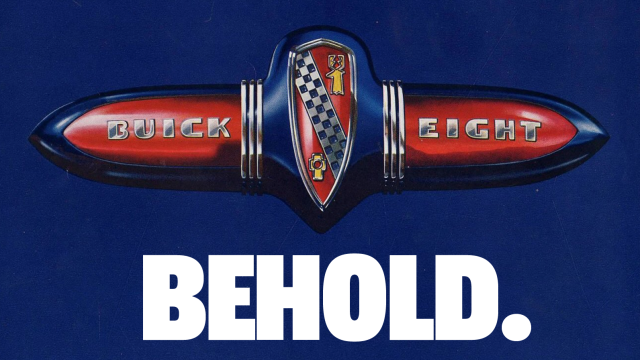Over this past weekend I sent my telepresence robot to BlinkerFest, the annual turn-signal enthusiasts’ meetup, held this year in Barcelona. Due to COVID reasons, only telepresence robots or service animals were allowed to attend, and while an all-remote solution would have made more sense, the deposit on the banquet hall was already made and non-refundable. At the event, a fellow indicator enthusiast (via an iPad) approached me on his service ostrich, and began to berate me, loudly and profanely. His issue? I have never covered the very first modern, flashing turn indicators on this site! As alarmed and hurt as I was, I had to admit he was right. So let’s take care of that, right now.
While, sure, it hurts to be called a “pants-wetting idiot dipshit smug-arse snotwad who doesn’t respect turn signals as much as he motherfucking pretends to” by a snarling face on an iPad gaffer-taped to an ostrich’s beak, I absolutely understand the cause of his anger.
While I’ve covered extremely early turn-indication devices, including those invented by silent movie starlets and those funny little mechanical semaphore arms, I’ve yet to acknowledge the first car to have turn signals as we would all understand them today: pairs of little blinky lights, one to indicate left, one for right. Simple and effective, and still in this basic form today.
That car was the 1939 Buick Eight, and Buick was so proud of their little innovation that it gave it its own jazzy name: Flash-Way direction signals:
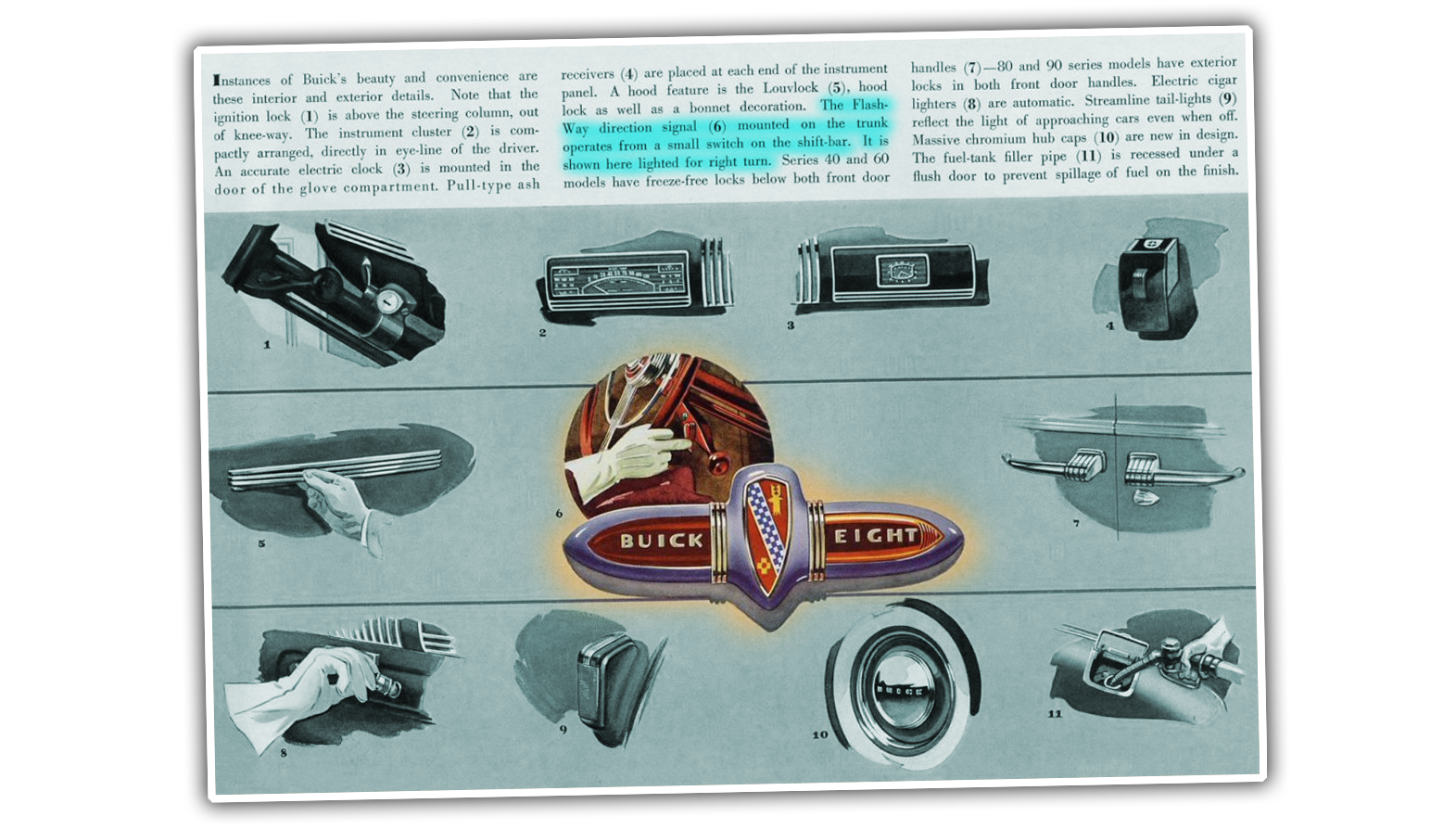
These early flashing indicators were a bit different than what we know today, in that they were only at the rear of the car, and were placed on the centre of the trunk lid, more like an illuminated emblem than part of the taillight setup:
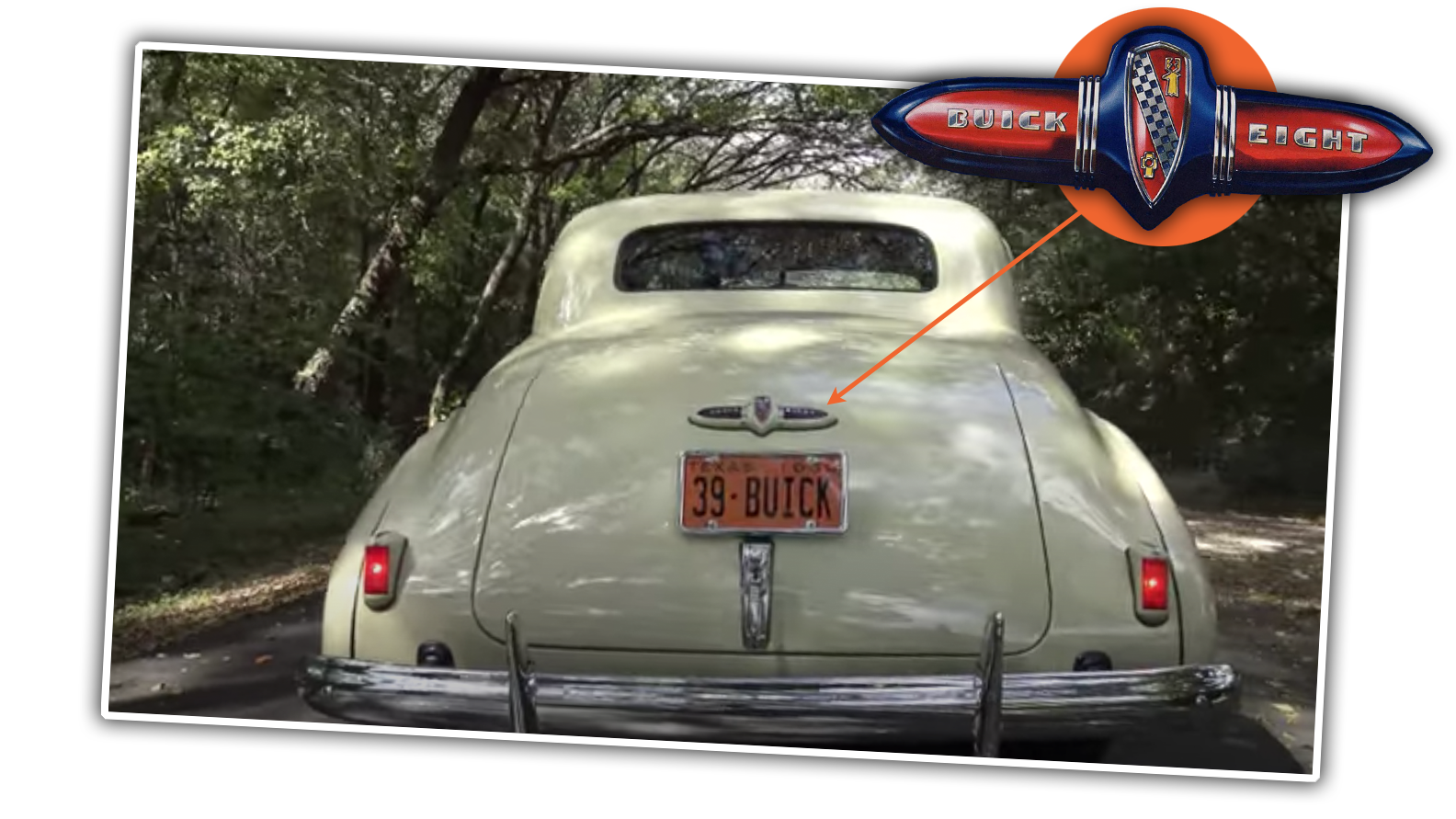
The location at the centre of the car and the relatively small size of the lamps and their close proximity to one another must have made the legibility of these things pretty iffy, and that’s not even mentioning the unfamiliarity other drivers would have had with blinking signals at all, which makes me suspect that for drivers that did actually notice these little arrowheads, I bet most had no idea what the hell they were for until the car actually completed a turn or a few, when the realisation probably sank in, accompanied, I’d hope, by delight.
It may have also been a bit confusing that left turns would be flashing BUICK and right turns EIGHT, which I’m not really sure what a driver would have expected that to be announcing. Eight? Eight what?
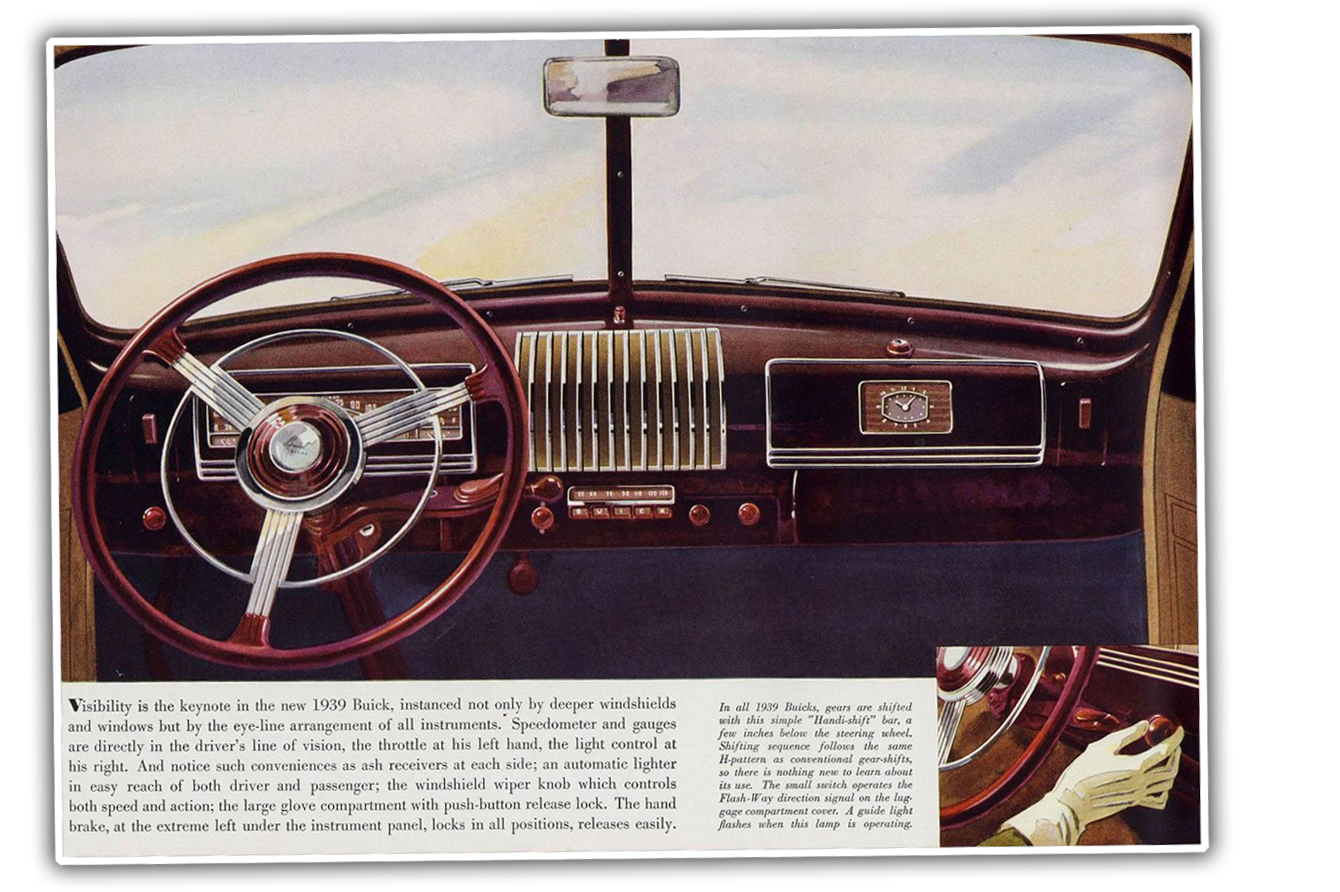
The controls for this first pass at flashing indicators are interesting as well, because although they were on a stalk, as we’d expect them today, that stalk was actually the gearshift. The 1939 Buick had a three-on-the-tree column shift setup, and the Flash-Way controls were a little 3-position switch on the shift arm assembly itself, which seems strange, but considering that you’d be placing your hand there often anyway, it kind of makes sense.
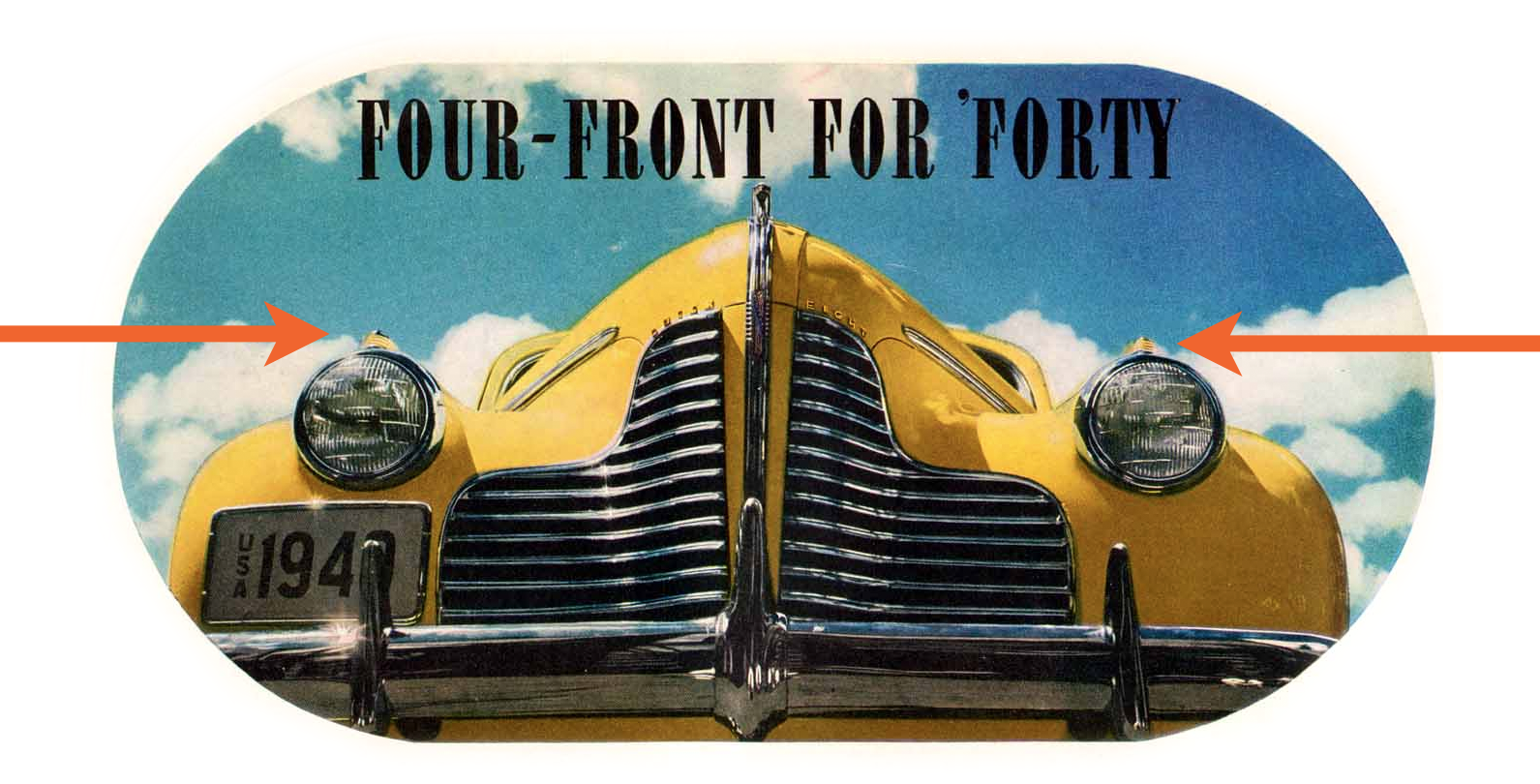
By 1940 Buick decided that, what the hell, let’s stick them on the front, too, along with a self-cancelling mechanism. GM must have been impressed, because that year they became standard on all the rich-guy GM brands (Buick, Cadillac, and LaSalle) and if the poors could scrape up almost eight bucks, they could be added to Chevrolets, Oldsmobiles, and Pontiacs.
Pretty soon, other carmakers began to offer flashing indicators, and by the 1950s, most American cars had them. By 1963, they were required to be amber, and that’s still where we are today.
Whew. OK. Maybe now that ostrich will leave me alone.
